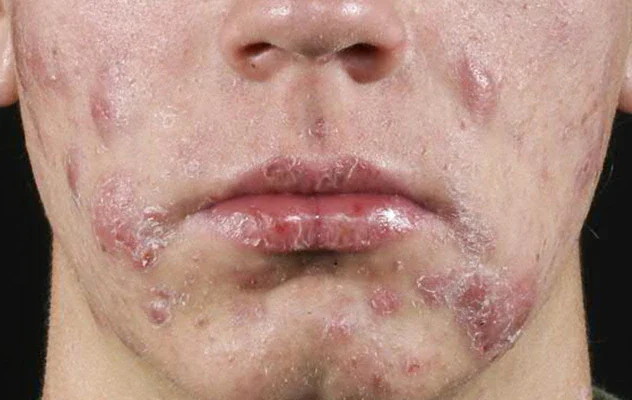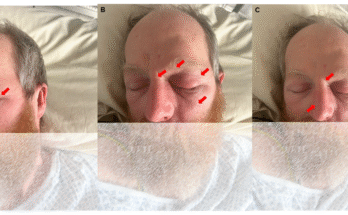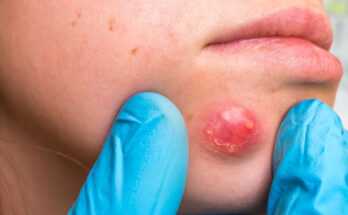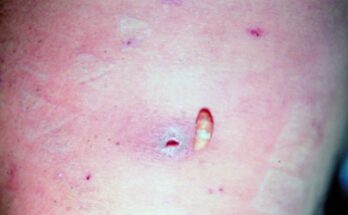Cystic acne is one of the most painful and serious types of acne that can appear on the face. Unlike normal pimples, these are large, red, and deep under the skin. They often fill with pus, become swollen, and can sometimes turn dark or black as they heal or get infected. When the entire face is covered with such breakouts, it can cause not only physical pain but also emotional stress. (You can watch the video below to see how severe this condition can look.)
This condition happens when oil, dead skin cells, and bacteria go deep into the skin’s pores, causing infection and inflammation. Hormonal changes, especially during teenage years or stress, can make it worse. In some cases, certain oily skin products, medications, or even genetics can trigger cystic acne. The pus and swelling are signs that the skin is trying to fight an infection under the surface.
Cystic acne can leave behind dark marks and deep scars if not treated properly. Many people try to pop these pimples, but that usually spreads the infection and makes things worse. The right step is to avoid touching or squeezing them and to see a dermatologist who can provide medical treatment. Doctors often prescribe antibiotics, retinoids, or special creams to reduce inflammation and stop new cysts from forming.
Maintaining a good skincare routine can also help. Washing your face gently twice a day, using oil-free products, and avoiding heavy makeup can keep pores from getting blocked. Eating a balanced diet and drinking plenty of water may also support skin healing. However, severe cystic acne almost always needs medical attention to prevent permanent scarring.
Even though cystic acne can be frustrating and painful, it is treatable. With patience, proper care, and professional guidance, your skin can gradually recover. The key is to act early, stay consistent with treatment, and remember that healing takes time — but it is possible.



